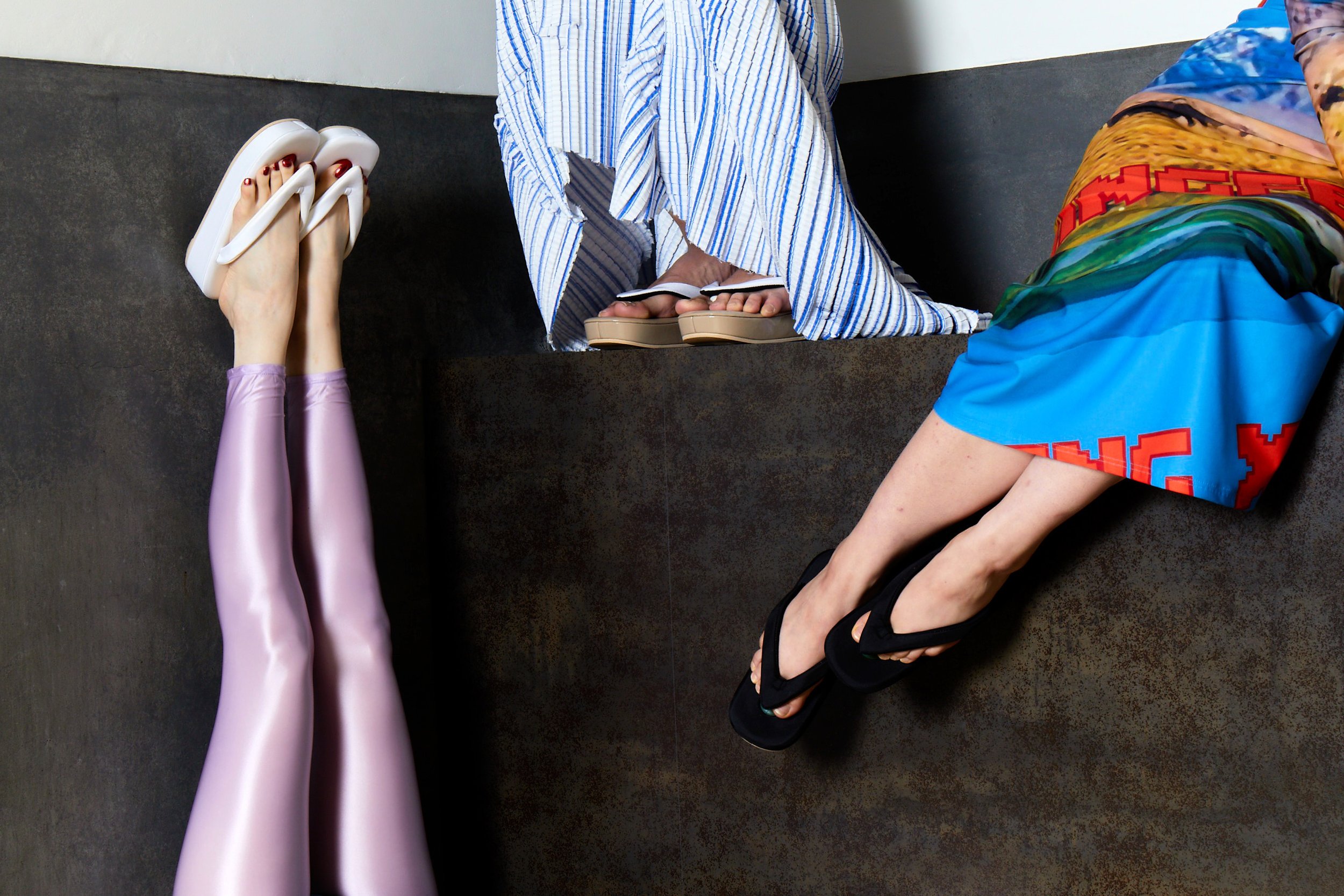
DREAMERS: Gion Naito
April 9th – May 28th, 2022
THE GALLERY is delighted to announce Dreamers: Gion Naito exhibition. Gion Naito has a rich history that dates back to 1875 as one of the most respected footwear makers in Kyoto, Japan. Seiji Naito, the fifth-generation owner, will be joining us on our opening events to greet guests and display his work. The collection consists of rare family archives, as well as newer, more modern styles.
About Gion Naito
Located in Gion, Kyoto, founder Jubeimon originally started as a timber and textile business in 1875. The founder also created “Geta” known as Japanese sandals, with the leftover materials. Manufacturing top quality Japanese style footwear for over 140 years, their long list of customers include kabuki actors, star actresses, writers, and intellectuals. To reach out to the world, the 5th generation owner, Seiji Naito, created a more modern collection in 2013. They aim to produce newer styles and concepts, hoping to build a bridge to the future with his new methods.
Culinary
Corned Beef Croquette Burger
Croquette burger we offered at THE GALLERY was passed down from the Naito family, who originally used the recipe of a famous Japanese writer, Kuniko Mukoda.
Effects and features of Japanese footwear
These days children are encouraged to wear “Geta” or “Zori” in Japan with the belief that footwear with straps strengthen feet. The foot muscles can be strengthened by grabbing a strap and holding onto a sole and that helps developing the arch of the foot and preventing bunions.
With oriental medicine, acupressure points between fingers are important to vitalize the flow of all over body’s life force, or “qi”. Balancing on the big toes and placing the center of gravity on the lower abdomen are basic features for Japanese classical dance, martial arts, and other actions. Sophisticated Japanese action has secrets in usages of the base of the foot’s toes.
The shape of the foot shows a unique episode. The hooves of huge cows and muscular horses have characteristics on their own to show the importance of bases of toes. Cows with cloven hooves can turn around on the spot, but horses with whole hooves need to make a big U-turn to change directions. A small difference in shape makes a big impact on movement.
Geta
Geta is a Japanese traditional footwear that looks like clogs or sandals. It has a raised wooden sole and holds the foot with a cloth strap. Now many people wear Geta with Japanese kimonos and yukata or summer kimonos. In the past, mainly monks and Shinto priests wore them.
Zori
Zori is also a Japanese traditional footwear that consists of a sole and a strap. Mainly they are worn with Japanese traditional clothes, but today many people wear zori with European clothes, too. These days, we see Geta with casual summer kimonos, and Zori with rather formal kimonos. But in days of old, Zori meant a footwear for dressing and was worn inside houses, and Geta meant wooden clogs to wear outside. On the streets, only people who serve to gods and Buddha, and people of high status could wear Geta. Normal people wore straw sandals but now they are used for special occasions like traditional festivals and Zori and straw sandals are seen as practically the same.
A life of a woman: Tsuruko Naito's archives
We're honored to exhibit an exclusive archive from GION NAITO's 5th generation owner's mother, Tsuruko Naito. Born in Kobe during World War II, she joined the family business as a young lady. She grew up as the "OKAMI", a muse for the house. In her collection, it is possible to see a Japanese woman's life in the variety of "zori" which were custom made for everyday life, as well as for special occasions. Her life paralleled the movement in Japan for women to get more freedom and independency. Sadly, Tsuruko passed away last fall at the age of 82, but her memory lives on in her collection of zori.
Wedding Ceremony
Auspicious pattern with crane
–– My mediator made a congratulatory speech that “she was like a crane arriving” on “Kodokisshin” the most auspicious day.
Visiting an art exhibition of Fusa Jingu
Red lacquer, floral embroidery
–– Accepting others with compassion, caring for people whom I will meet, free myself
“Jyusan-mairi” worship to celebrate her daughter turning 13 years old
Cherry blossom Lacquer painting
–– Taking responsibility for a relationship with my daughter to support her freedom on being herself”
Photo by Takao Iwasawa (models)
Special Thanks to
Kan Asakura / Maggie James / Ko Kado
The Gallery Crew
Manabu Asanuma / Ricard Diaz / Victor Diaz / Shuji Furukawa / Karma Gurung / Punam Gurung / Fabian Morales / Hiroki Odo / Miki Ozawa / Brian Saito / Takeshi Sato / Victor Sandoval / Mari Yoh
Exhibition curated by Akiko Ichikawa







